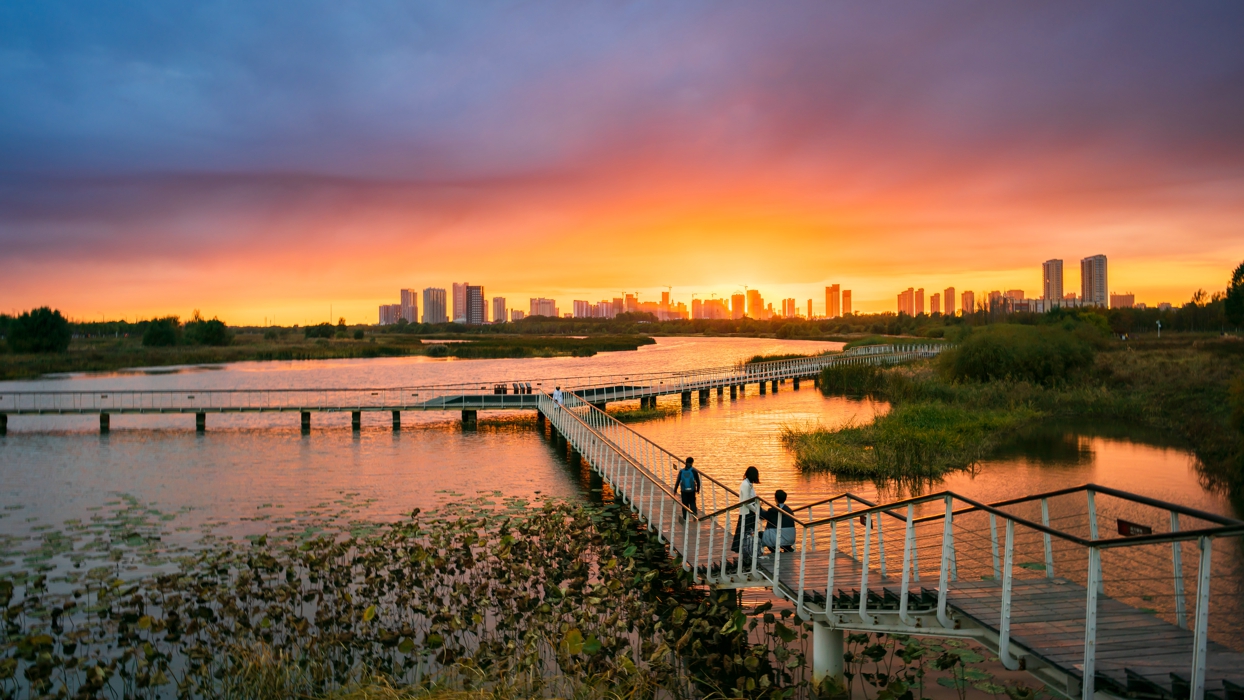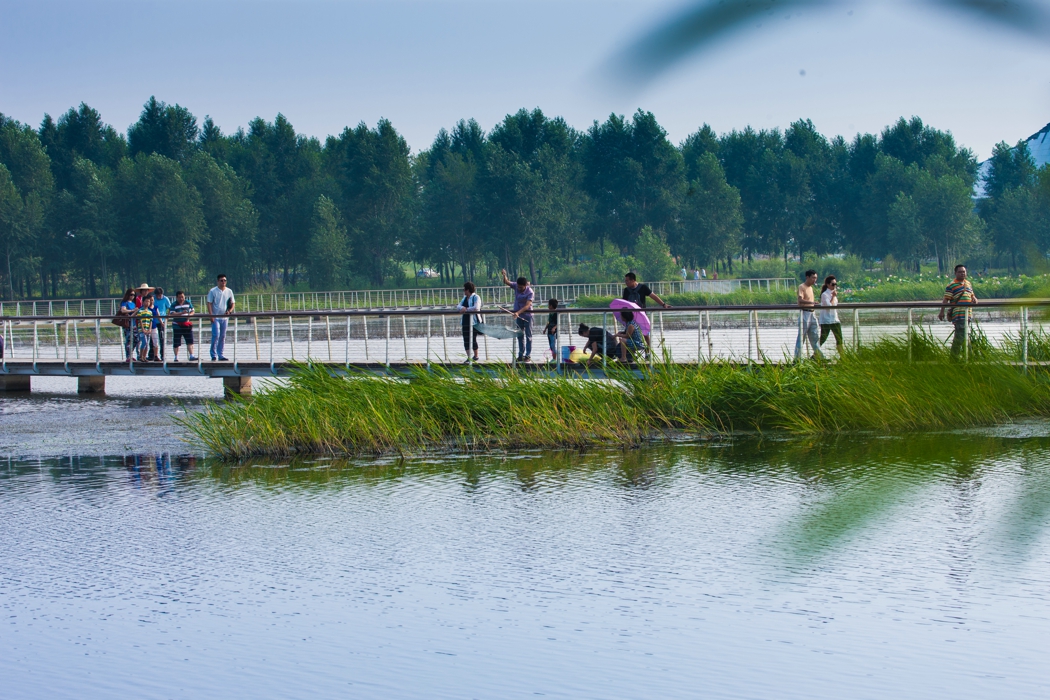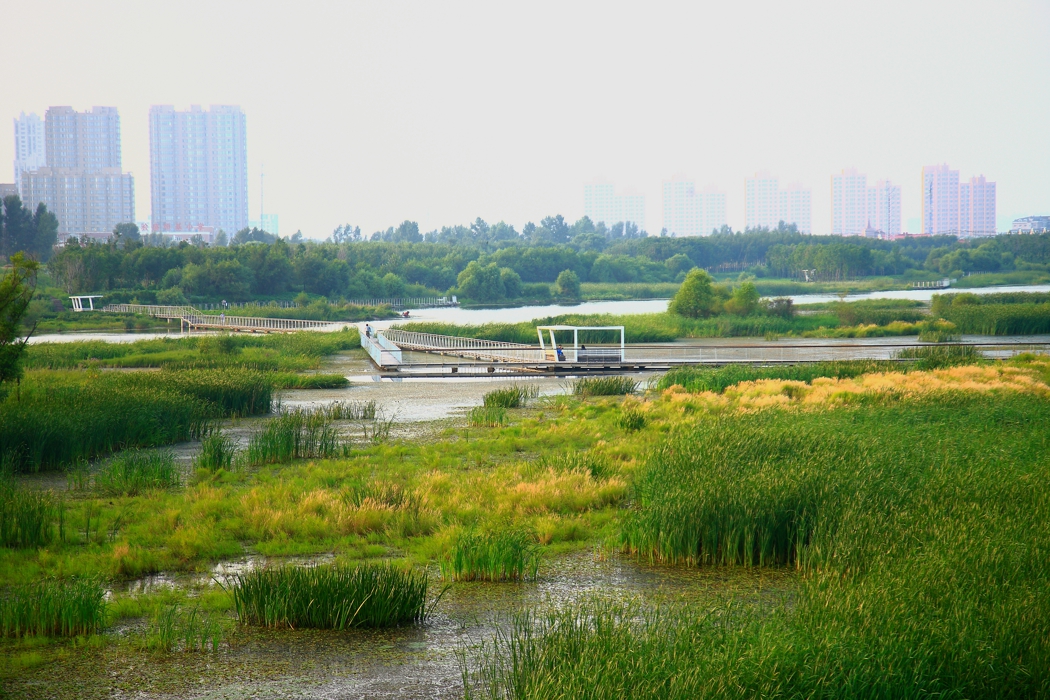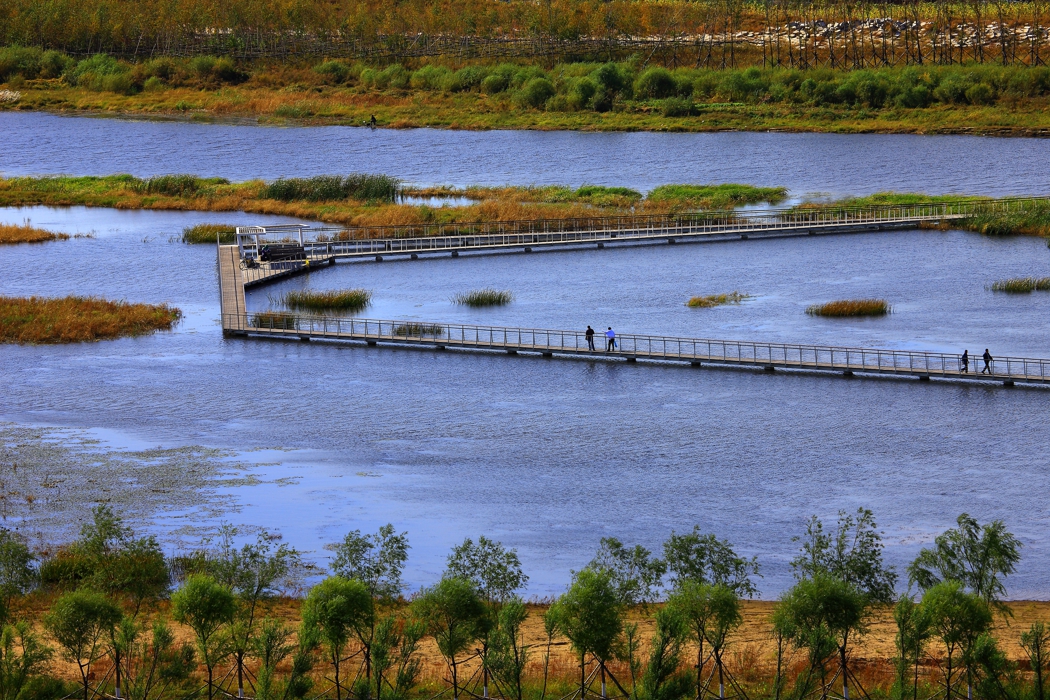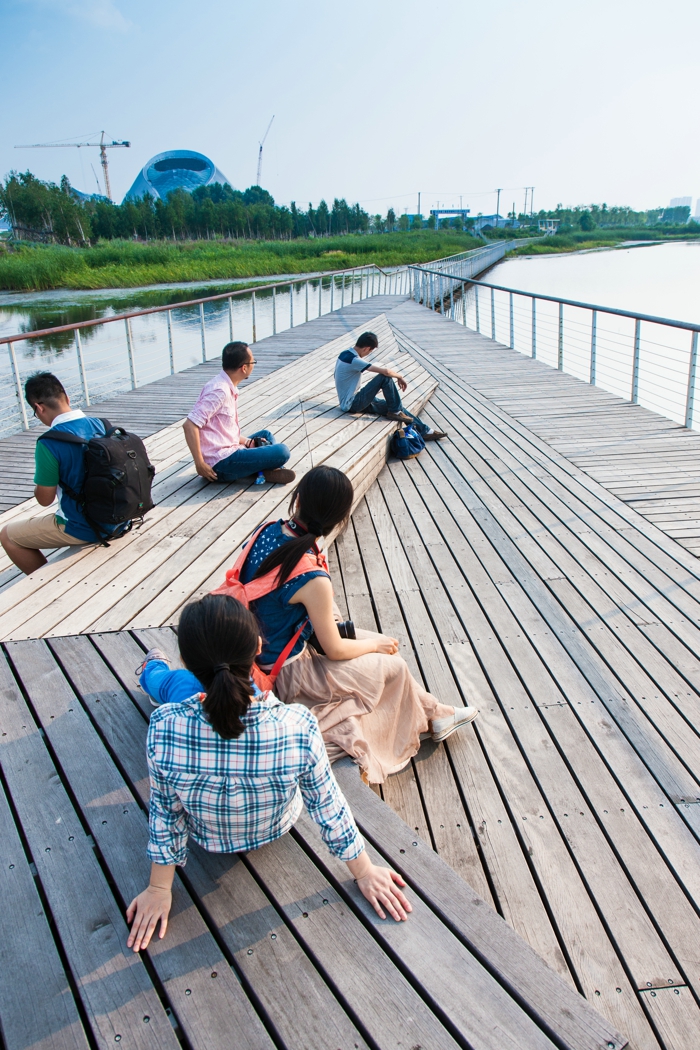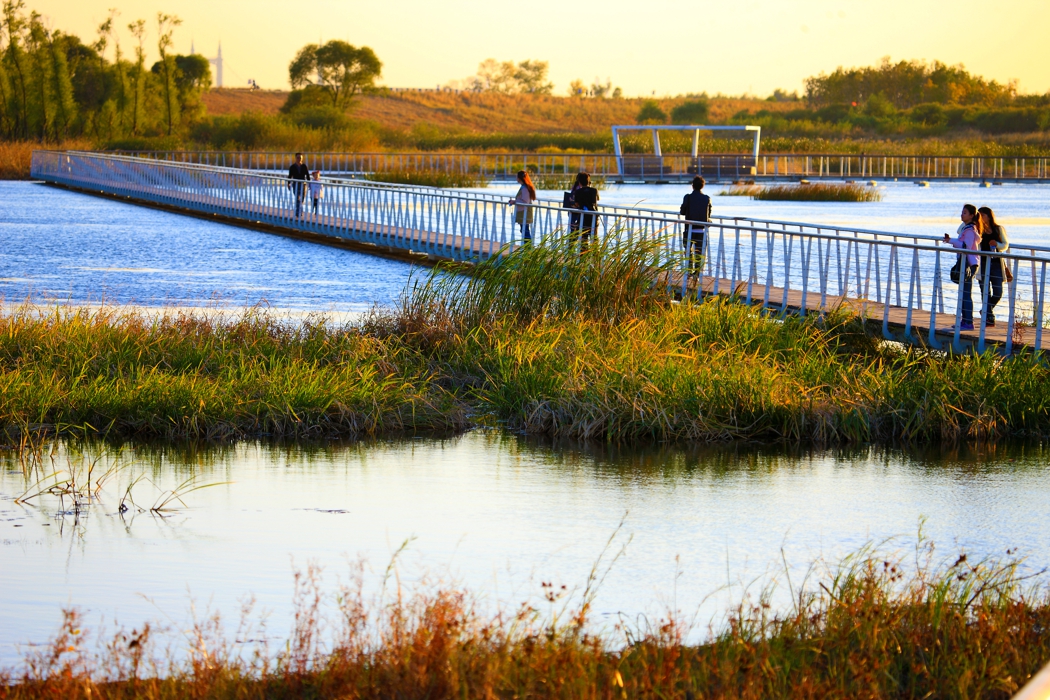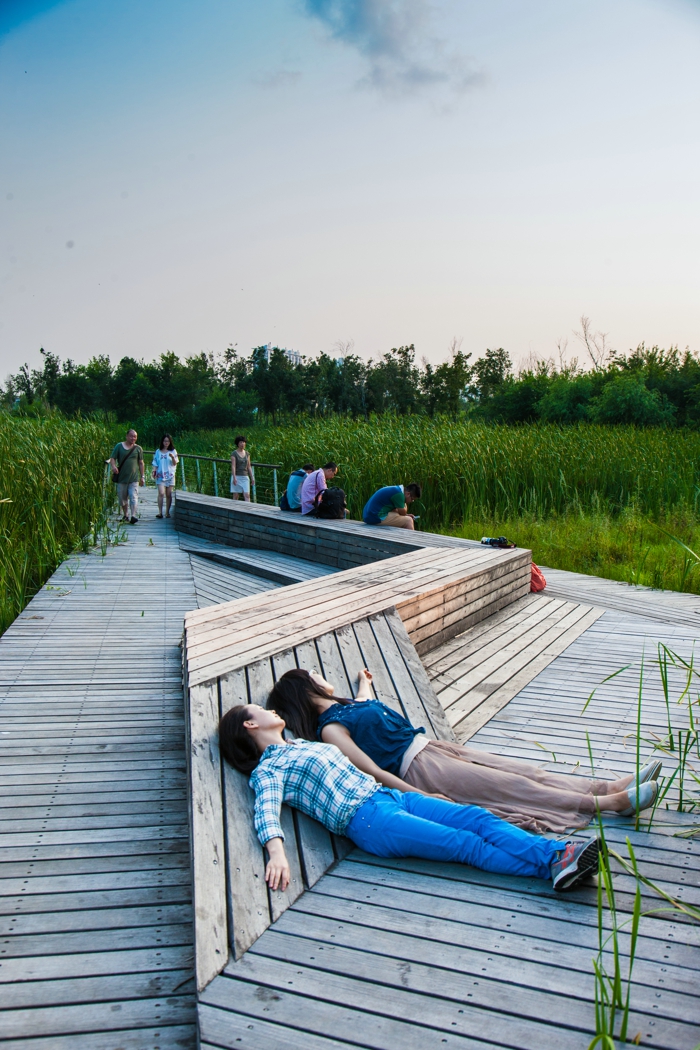Harbin Cultural Wetland Park Waterside Boardwalk
Project Information
- Project Location:
- China Harbin, Heilongjiang
- Project Scale:
- 1430m
- Design Time:
- June 2010
- Build Time:
- July 2016
- Award List:
- 2016 Best Landscape Architecture of AZ Awards, 2016 Environmental Leadership Award of AZ Awards
- Related Papers
Project Profile
Located in Harbin, a major city in Northeast China situated along the Songhua River, this site experiences significant seasonal flooding. After the construction of a 500-year flood protection levee in Jiangbei New District, a 200-hectare wetland was separated from the main river channel. Surrounding this newly isolated wetland, a series of ecological depressions were designed to collect and purify stormwater runoff from the nearby cultural center and urban areas.
Research revealed a seasonal water level fluctuation of up to 2 meters, which made it essential to create a resilient public space that could adapt to changing hydrological conditions. The design team developed a 6-kilometer-long elevated boardwalk system, connecting 13 rest platforms and detaching pedestrian traffic from the fluctuating ground plane and wetland edges. Permeable volcanic sand paths were also laid on higher ground to create eco-friendly walkways. Together with the boardwalks, these paths form a continuous walking network weaving through woodlands and meadows, enriching the visitor experience.
With minimal intervention, the adaptive and water-resilient park offers spaces for public recreation while allowing nature to breathe and regenerate. The boardwalk lightly touches the land—bringing people closer to nature without disturbing it.
